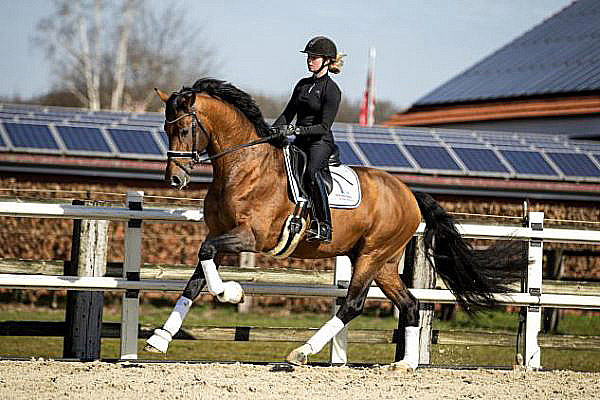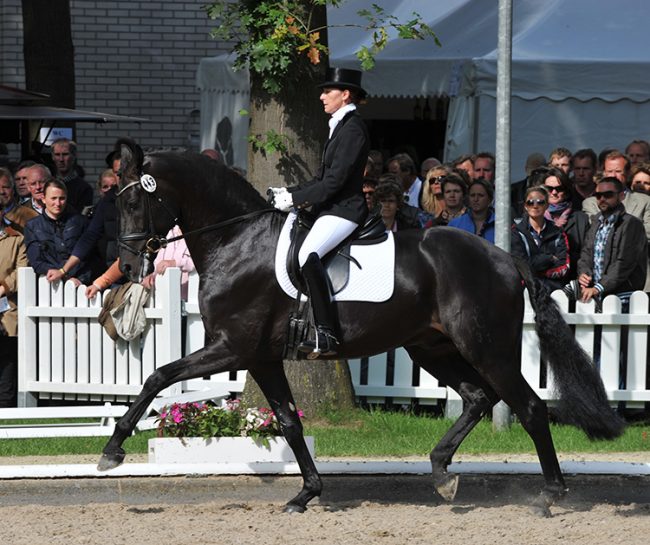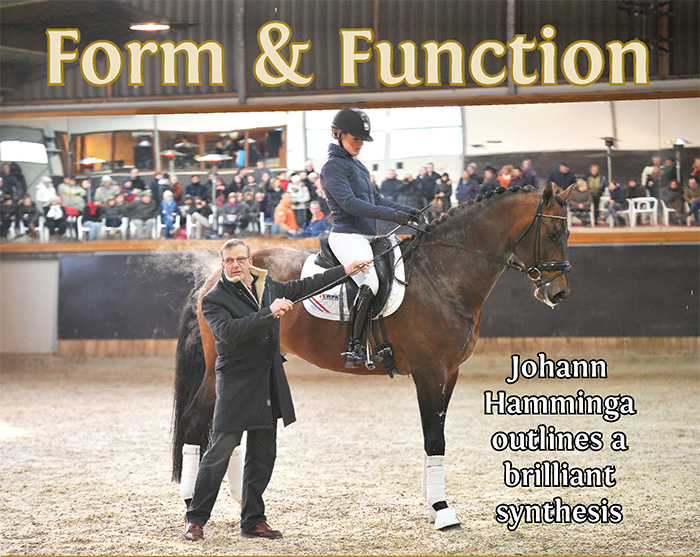
You really don’t have to be a genius to know when you have walked into ‘the real thing’, a training barn run by a horseman who knows what he is doing. Everything about the set up is professional, and that doesn’t mean flash, no chandeliers, no marble porticos, just everything in place – you immediately get the feeling that this is a well-oiled, well-used training space. And yes, the glass of schnapps on a freezing cold day is a nice welcoming touch…
So it was when we walked into the barn of Dutch trainer, Johan Hamminga, and when the first rider and first horse started to work, then you knew that you were right. This man is an exceptional horseman.
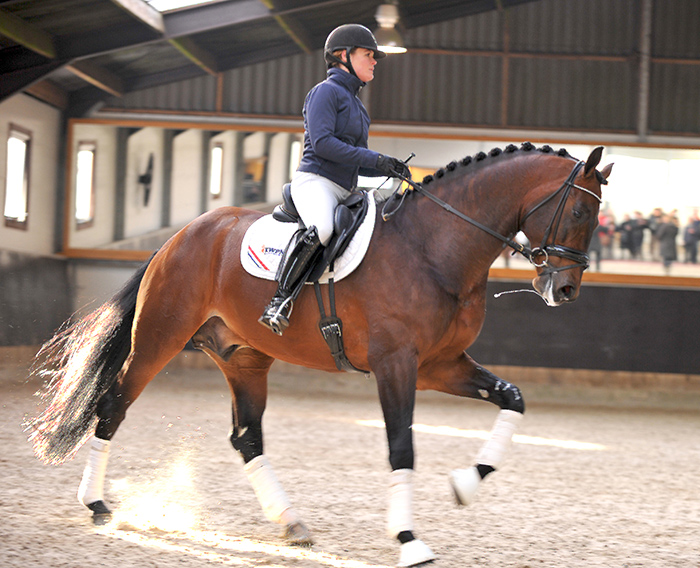
The horse was pretty flash too, a six-year-old Scandic/Glendale stallion, ridden by Johan’s bereiter, Jennifer Sekreve, and Jennifer is something special too. She is in complete harmony with the horse, she really is riding the youngster with her legs and seat, and Johan has begun his impromptu lecture to about 100 of us who have travelled to visit him as part of the KWPN foreign visitors tour.
Johan is interesting because he is not just a superb technician when it comes to the rider/horse interaction, but he is also an astute observer of the breeding scene, and intent on applying his breeding knowledge to his equitation skills, and vice versa.
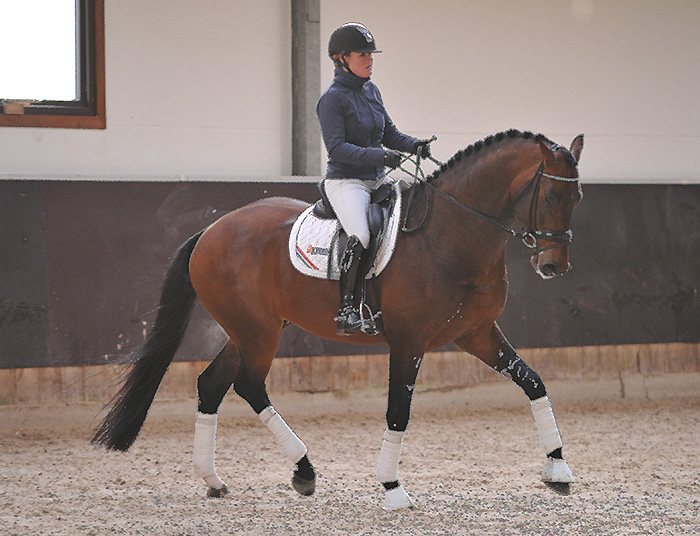
He talks revealingly about ‘balance’:
“The balance of the horse is really the most important thing. The horse must be in a good shape. What we need to be aiming for in our breeding program is a horse with a good hind end, a horse that is strong and capable of bending behind. It all comes from the power and activity behind, the front doesn’t matter, steady on the bit, doesn’t matter – when the horse is in balance, the front and the contact, will come.”
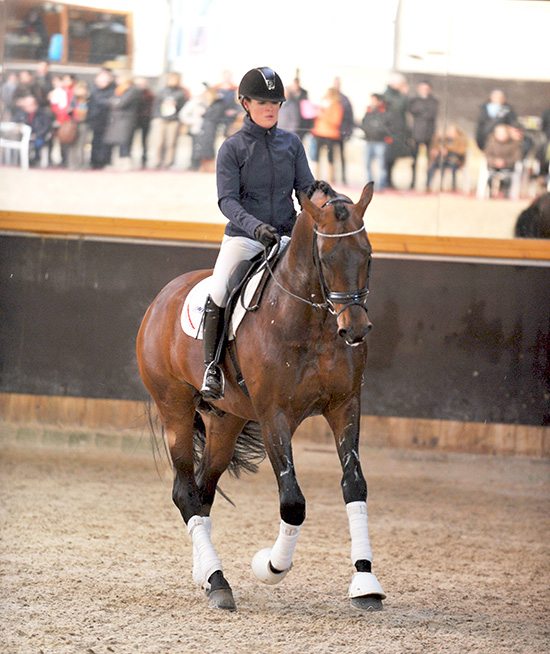
The horse is flowing around the arena in the most beautiful shape:
“Never make a horse short in the neck, you must always be lengthening in front. When you make a horse short in front, then it goes down in the back, the neck is too high. When you open the horse, it lowers the croup and carries the rider’s weight.”
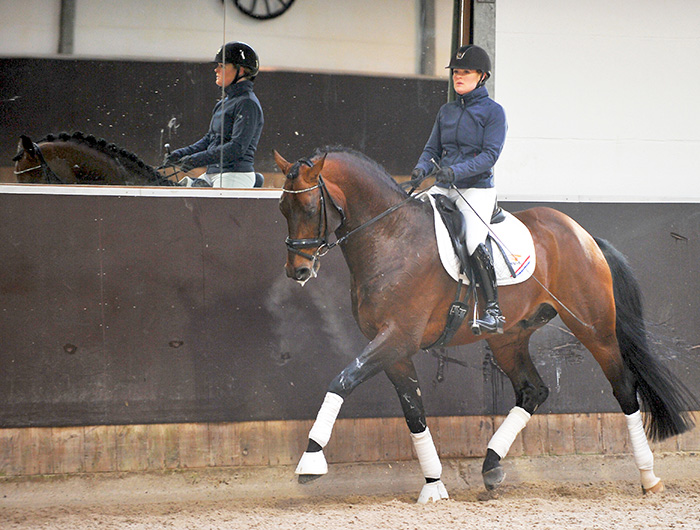
“I like to bend the horse’s inside hind leg, never bend the horse to the inside, and don’t use the inside rein. When you pull on the inside rein, you block the inside hind leg.”
And back to the connection between breeding and riding:
“I prefer some bloodlines. With Scandic, you get a very good hind leg but you need a mare with a long front – Scandic has lots of power behind but he needs a front. I like Ferro, and I love De Niro. In dressage, you need a good hind leg.”
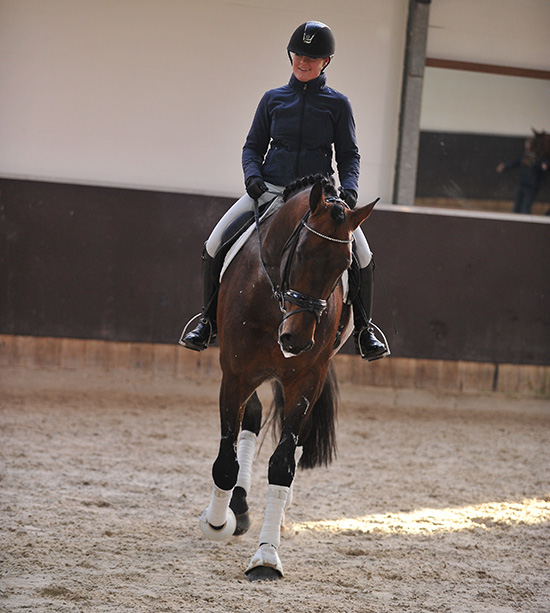
Next Johann discusses another young horse
At this point, a six-year-old mare was brought in for our inspection. By the German sire, Samba Hit, she was out of a Vincent/Roemer mare, she was to be the subject of an illuminating conformation examination:
“The negative of this mare is her front. The best part of her is behind. When we ride or judge, we make choices and with this mare, we can make her stronger behind and loosen her in front to compensate for the shortness. She has a long sloping shoulder, which is very important – and the saddle is in the middle of the horse, that is important for balance. The loins are very important – the loins, the spine and the muscles of the loins are the only connection from the power behind to the front of the horse.”
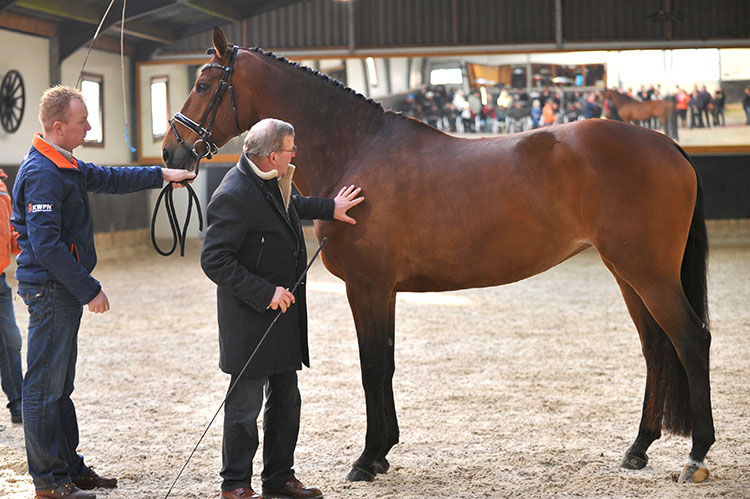
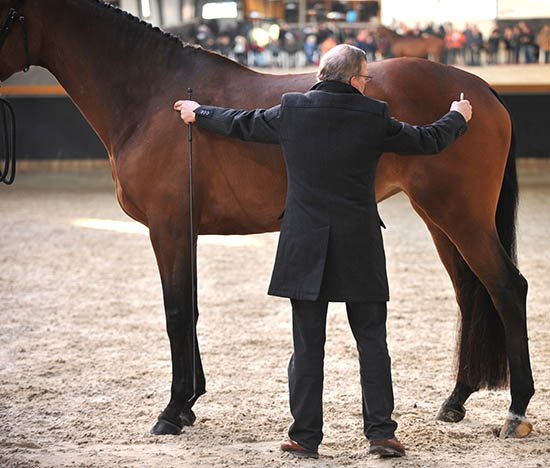
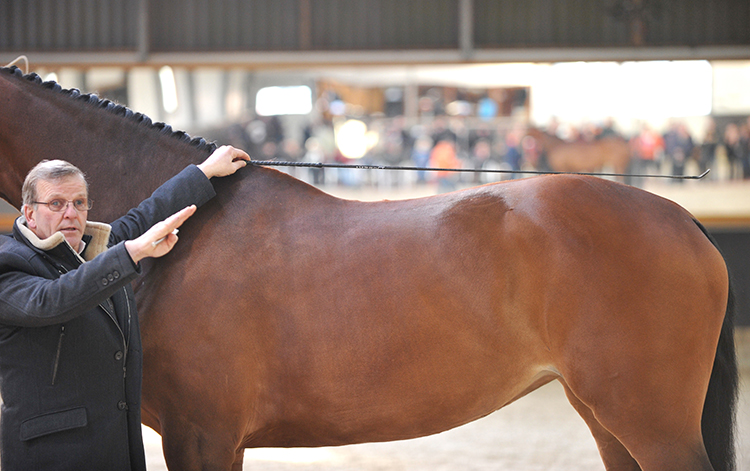
At this point, Johan uses his whip as a sort of spirit level to demonstrate that the top of the wither is the same height at the top of the croup and then uses the same whip to measure the distance between the hip joint and the turning point of the shoulder. Why?
“Because this distance equals the ground covering ability of the horse. I like this mare, I am hoping she can go to the selection trials for the World Young Horse Championships.”
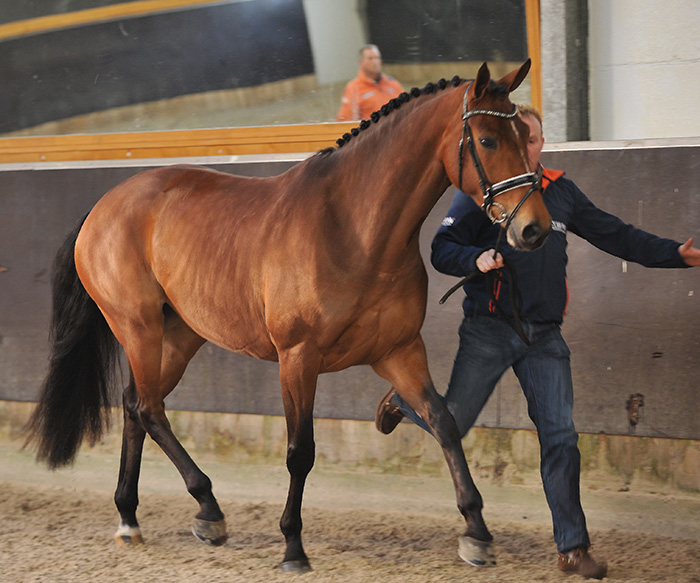
The next candidate in our little conformation clinic was a three-year-old German-bred stallion – by San Amour out of a De Niro/Andiamo/Argentinus mare:
“I bought him in a foal auction in Germany. I liked the bloodlines but also the topline connection – the wither to the back to the loins to the croup.
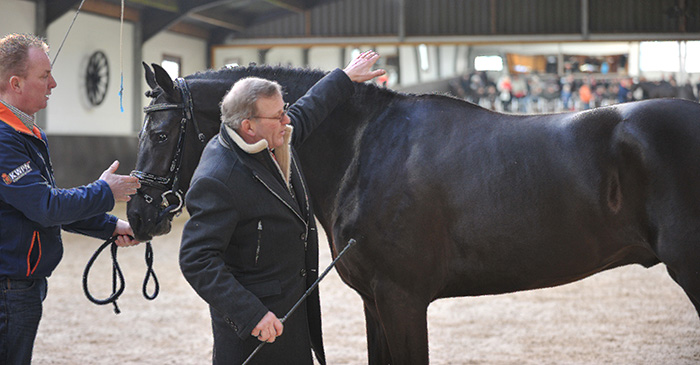
His negative point is his neck, it is long enough but it could be more up from the wither and cleaner on the bottom of the neck. The most important thing to look for is a body in good proportion, with an uphill tendency and connected from the front to the back. One of his problems is that he is so big. He is 173 cm and he grew three or four centimetres last month. That takes a lot out of them.”
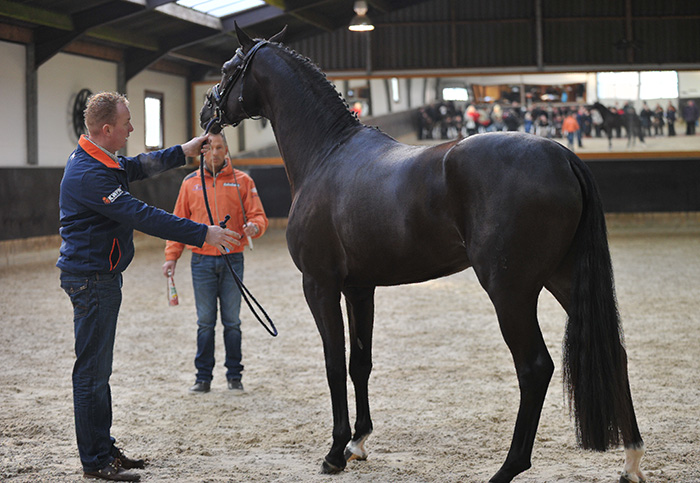
See how good handlers can show a horse well, here the colt looks up in front, at least to our non-expert eye. Readers know this horse, it’s a young San Siro.
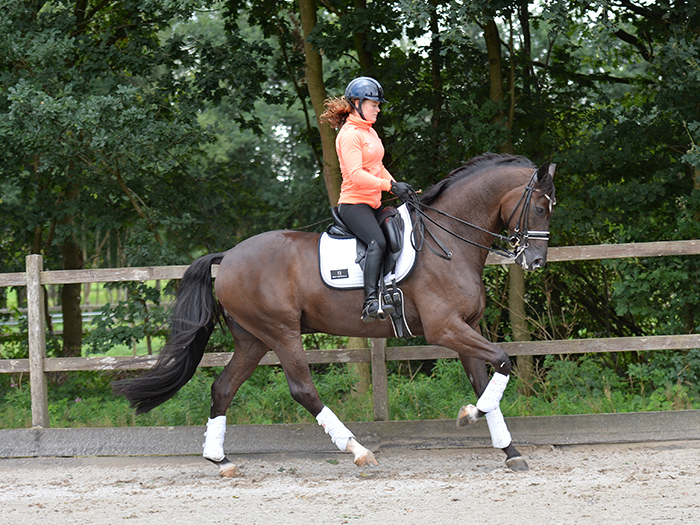
Now winning at Prix St Georg level. Here’s how he looked at the end of last year…
The next stallion into the school was by the German sire, Fürst Romancier, he had just come home from the KWPN stallion show in Den Bosch. Johan likes to see the stallions he uses under saddle, and paid close attention to Fürst Romancier when he was presented by Ulf Möller:
“When I saw him with Ulf, I thought he had very good conformation, but was he active enough behind? But with this horse we have Fürst Romancier combined with a Flemmingh mare, and it is a very good combination. I tried him once under saddle, I wanted to know how he feels, is his mind tense or not? He gives a good feeling, very electric. I felt that he had good collection on a little half halt.”
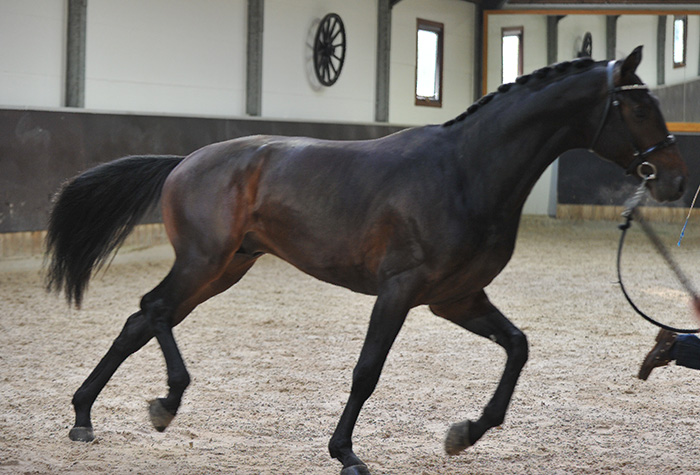
The stallion impressed the licensing commission, and was not only approved to go on to the performance test, but also included in the lineup for the championship ring.
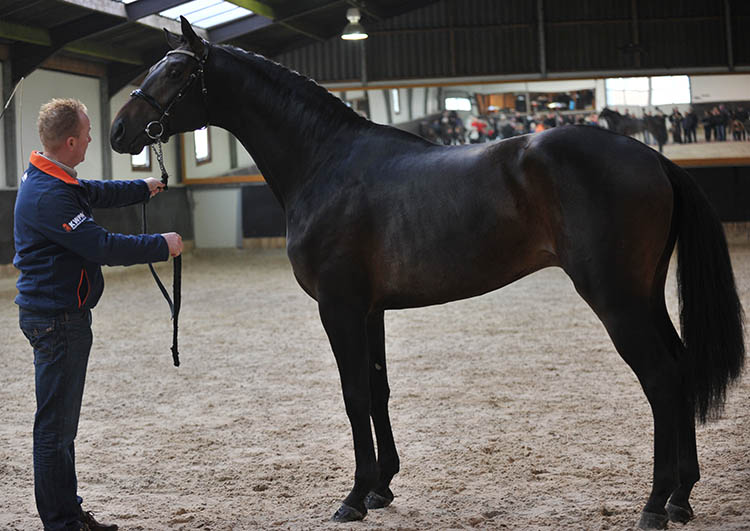
Fürst Romancier/Flemmingh colt
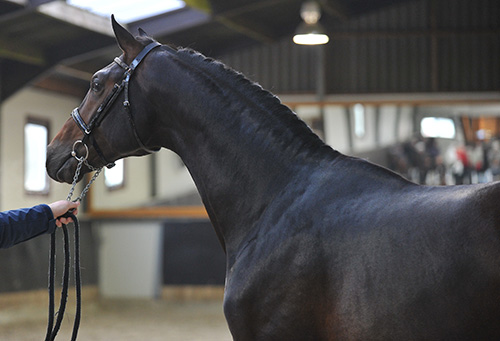
The lovely young horses kept coming, next was a Vivaldi, out of a Havidoff/Roemer mare (below).
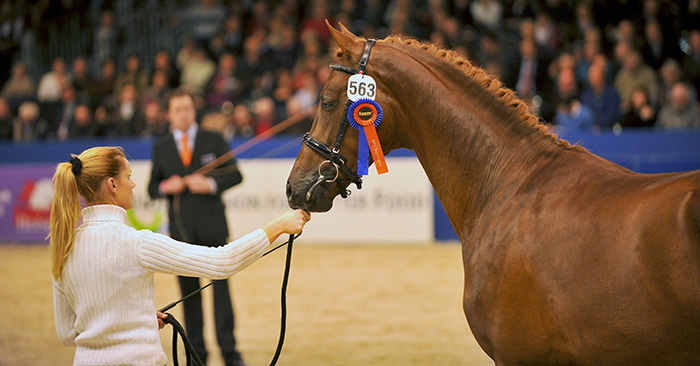
“I like his neck position, he has good distance behind his cheek, he can bend there. The legs are good, and in proportion to his body – the only thing is that he could have a little more condition.”
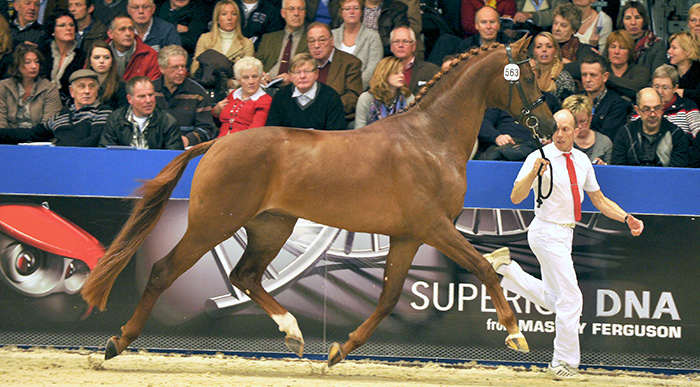
“This stallion comes from a very good mare line that has produced a lot of dressage horses, including Hans Peter Mindenoud’s Nadine. The most important thing with this horse is that he is calm. When there is a noise, he stays calm, he can regulate his temperament. I love his eye…”
Johan was generally impressed with the youngsters he had seen at the Stallion Show: “This was a very good year for the KWPN dressage stallions. There were more different bloodlines, and that is important for breeding. We have lots of offspring from Jazz, and we have to work to find other lines.”
Johan had another stallion brought into the arena, this time the seven-year-old, Zambuke – by Scandic. The young horse was training towards a Prix St Georg start later in the season.
“He is out of the dam line of Biotop (Dr Klimke’s Trakehner stallion). In the past three seasons he has covered 200 mares, and we are happy with the result. He is very good in his mind. He himself is not very big, and like Scandic, he needs mares with a big front. His neck and his topline are a little horizontal.”
Next a Damon Hill mare
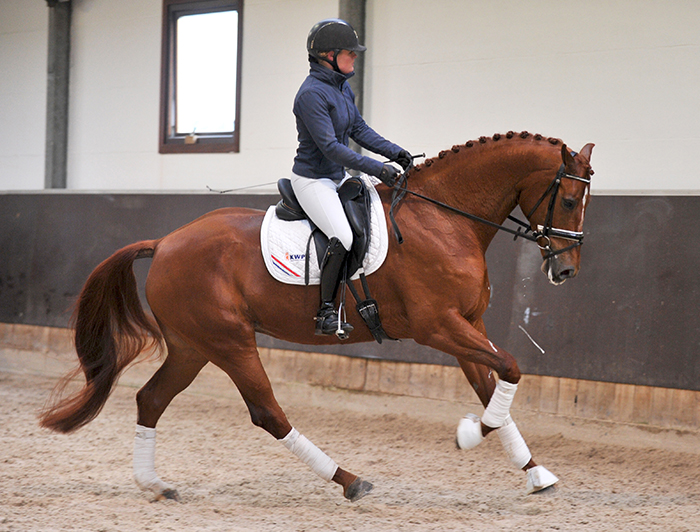
Once again Jennifer is in the arena, this time riding a six-year-old mare, by Damon Hill out of a Flemmingh/Amulet mare.
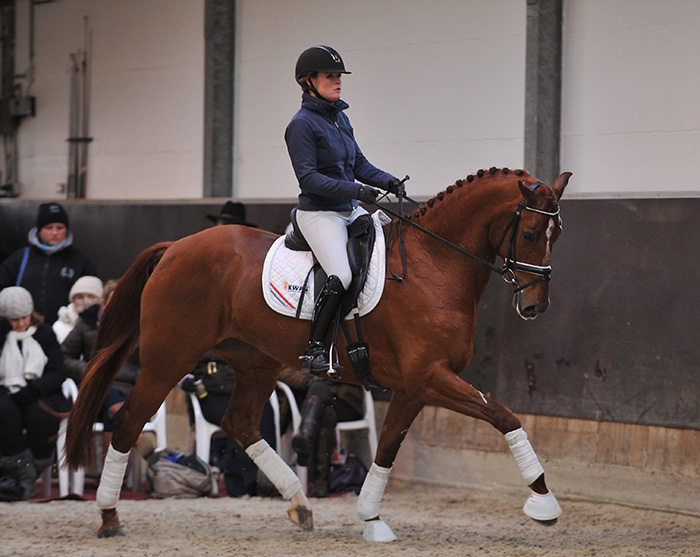
“I like this mare – look at the topline. Look into her eye and head. She is good in the mind but she is looking everywhere. She is sensitive. She has very big muscle in her hind end but she could be stronger in the loins, behind and under the saddle – so we have to train her a little more horizontal and with real contact, with contact it is possible to develop her top line.
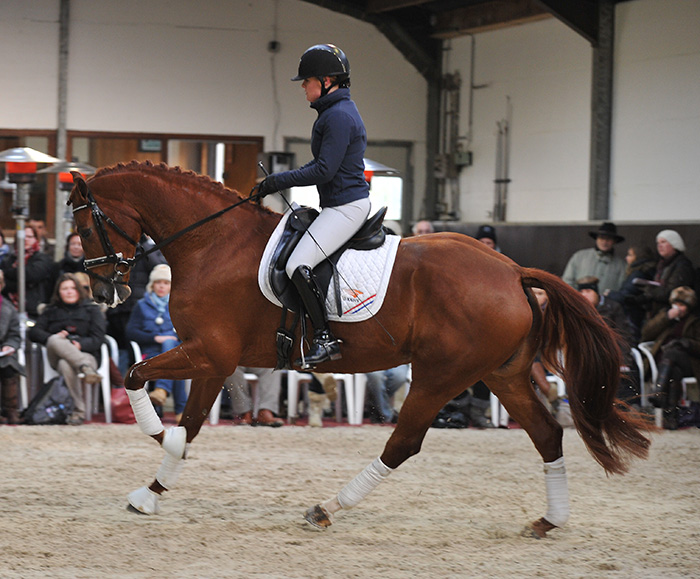
She has very nice movement in front, but we have to develop the saddle position so we work her in a little longer frame and in a lower tempo so she learns to carry and distribute the weight. Not too much forward, forward is very important, like petrol in the car, but it has to be regulated.
See she can work deeper and deeper without pulling on the rein, it is very important to look to the balance, when the balance is good, then we see suspension in the trot.
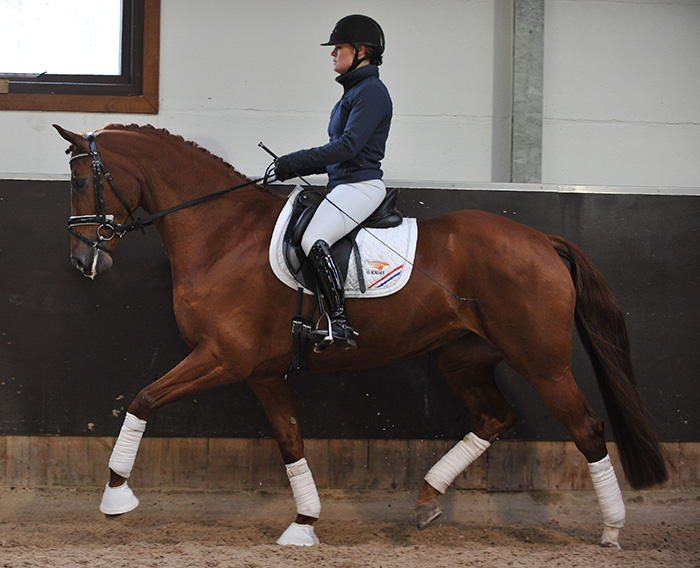
We must feel the contact because it can activate the hind legs and develop collection and reaction, so the frame can shorten and lengthen.”
“Look to the diagonals in trot. I prefer the hind legs to come to the ground, one second before the front leg. If the front leg touches first, then the horse is out of balance.”
Here’s the mare two years later so you can see how she progressed:
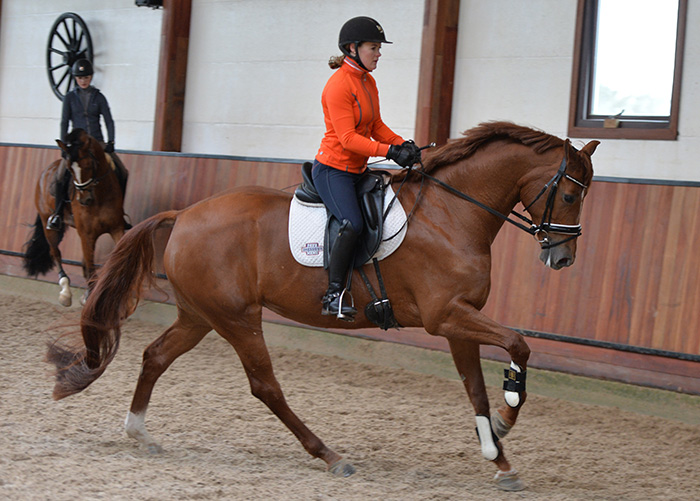
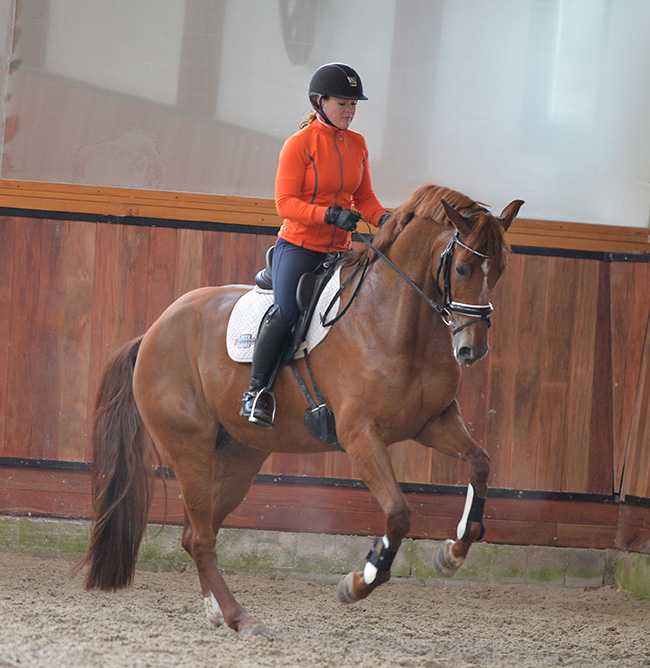
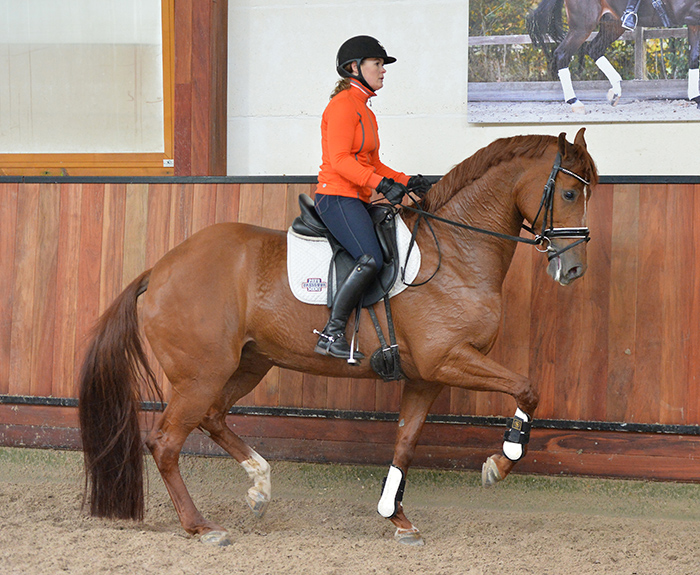
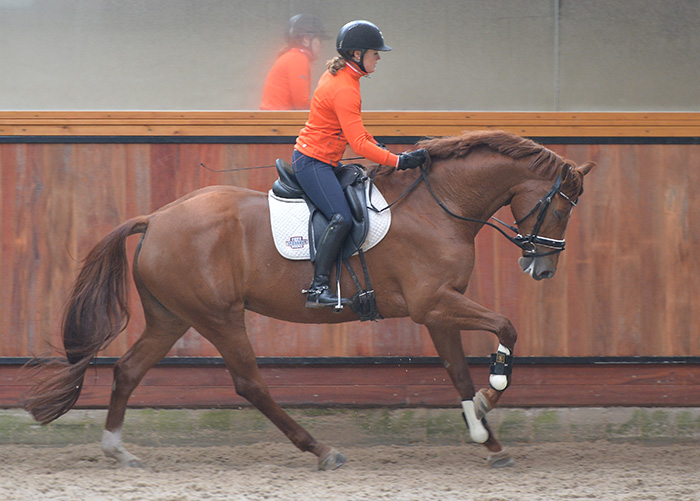
Breeding dressage horses? Consider the stallions IHB has on offer like Furstenball Go to www.ihb.co.au
And Vaderland
